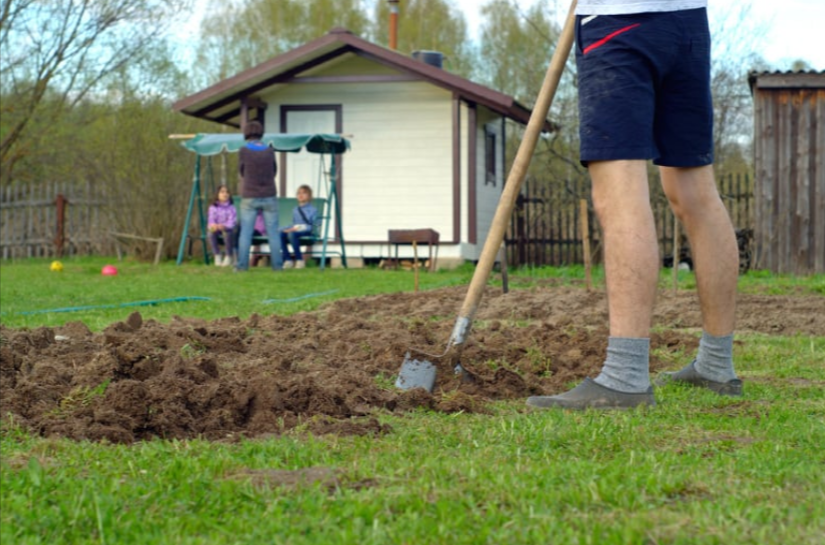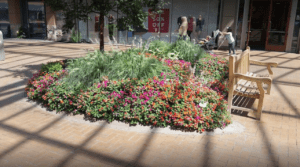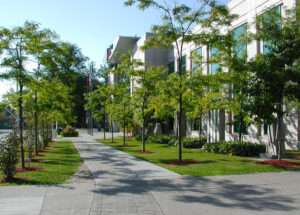If you think it’s time to give your lawn a thorough makeover, you’ll want to read this. In this discussion, we will go through the steps necessary to replace a lawn in Salt Lake City.
Eventually, almost every grass will need to be replaced. Therefore, if yours is behaving really poorly and you do not believe that a modification to the routine that you follow to care for your lawn will be sufficient to restore it to its original beauty, then there is only one option left for you to consider. Do it all over.
Perhaps chafer grubs have overrun your lawn, or unsightly weed grasses have taken over. Maybe you just bought a new place and are working on landscaping it. If you’ve decided to replace your lawn for any reason, We have a simple 10-step method for you to follow.
Here I’ll Show You Exactly What To Do To Remove And Replace Your Existing Grassy Area.
- To ensure that no plants are left alive in your lawn, use a systemic weedkiller to eliminate them.
- Wait for three to four weeks until the grass in the yard is totally brown.
- To get rid of decaying plants, use a scarifier.
- Reduce soil compaction with some aeration.
- Spread topdressing on the grass, and then use it to construct a seed bed.
- Add another layer of topsoil over the grass seed you just planted.
- Apply fertilizer prior to planting to promote seed growth.
- Maintain a consistent level of moisture until the grass starts to grow thick and lush.
Why Should We Use Seed Rather Than Turf?
Obviously, if you have an unsightly lawn, you should remove the grass, aerate the soil, and put in turf. But there’s an issue with it in my book. The reason for not digging is not because of ailing back but rather because it destroys the ecosystem of tiny creatures and microbes in the soil. Moreover, a lot of scarce water is needed for grass establishment.
My strategy for entirely replanting a lawn without using turf is not only friendly to the earth but also, despite the fact that there is some manual labor involved, I believe it is less labor-demanding than turfing.
You Should Begin by Removing the Existing Grass.
First, you need to replace your grass, but it’s always smart to think forward when working in the garden. The second phase will consist of clearing away any decaying plants. Cut the grass now as short as you can and collect the cuttings so you can do less labor in stage 2.
A systemic weedkiller is your best bet if you want to get rid of your worn-out, unsightly lawn. In my opinion, this is the safest and most effective method for permanently eliminating these invasive plants. Some weeds (and weed grasses) are utter monsters when it comes to recreating themselves from the slightest piece of root left in the ground. No matter how deeply you dig, you might not get rid of the whole plant. Herbicide it shall be.
In order to ensure that you get a systemic weedkiller, read the label thoroughly. Consider the one that is capable of killing the plant from the roots all the way up to the leaves. Stick follows the manufacturer’s guidelines to the letter. You should also avoid getting the sprays on your beds and borders since it will kill any vegetation.
We prefer to put a dye into the water so that we can see precisely where it has landed. This helps me to be more accurate. If you don’t pay close attention, you can miss something important.
Take Away the Decaying Plants
Your grass and the weeds in it should be completely dead 3–4 weeks after you apply the herbicide.
Make use of a scarifier to clean up the soil’s top layer and get rid of any remaining dead vegetation. It is possible to use a springtine rake for this task if your grass is quite small, but doing so is tedious and time-consuming labor; if you ask me no.
To begin, turn your scarifier up to its maximum level and go over the area numerous times. Reduce the height of the blades by one notch between passes over the grass. Dead things should be removed from the grass as you go.
The Soil Has to Be Aerated
Aeration is a fantastic method for easing compaction without negatively impacting the beneficial soil bacteria that are essential to plant growth. With a hollow tine aerator, we can break up the soil surface and produce large, deep planting pockets for some of the seeds we’ll be putting in later.
Seeding and Topdressing
Applying a layer of topdressing now can help smooth out any divots or dips in your grass. Some of the seed was spread between two layers of topsoil.
Beginning with the seed. Sowing rates for grass seed mixtures typically range around 30 grams per square meter. If you’re using topdressing, now is the time to cut your seed in half and spread it out at a rate of 15 grams per square meter.
Next, topdress your lawn with 1-2 cm of material. Topdressing with sterilized topsoil is an option if your soil is excessively sandy. Mixing 70 percent sand with 30 percent topsoil can help break up clay soil and make it more workable. Don’t ever put peat to use. It’s not sustainable, makes a mess while wet, and won’t hold water when dry.
If you have a big lawn, it is in your best interest to invest in a topdressing spreader.
Spread the topsoil evenly with a rake, then add more to low spots; in order to break up any huge lumps, use the back of your rake. Topping for an apple crumble is the ideal texture to go for here. The topsoil has to be compacted by treading on it.
If you want to prevent birds from pinching your seed, spread the rest of it and rake it over again.




